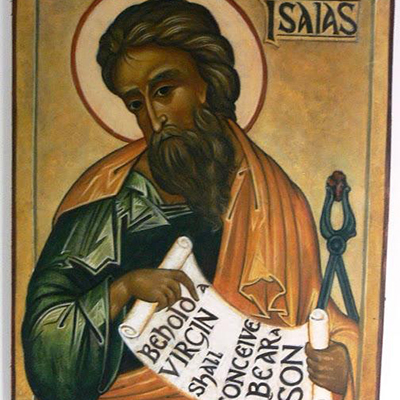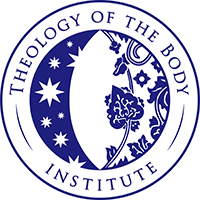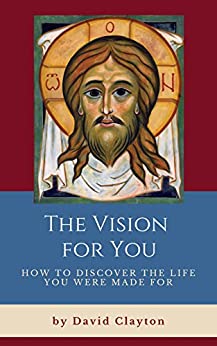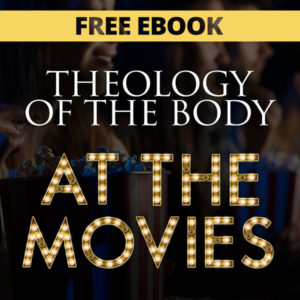

When Mystique Obscures Mystery — Some Truths About Holy Icons
When Mystique Obscures Mystery — Some Truths About Holy Icons

Do we write or paint icons? Do you have to fast and pray before you create one? Is the saint present in the icon just as Christ is present in the Blessed Sacrament?
In the course of writing and talking about icons I am often asked about the following: Is it true that an artist doesn’t paint icons, but rather that he “writes” them because we are portraying an aspect of the Word? Is true that only Orthodox or religious are holy enough to paint them? Do we have to fast and pray before painting them? And finally, is the person depicted present in an icon in the way that Christ is present in the Blessed Sacrament?
So what does the Church really believe about icons? In short, the answers are as follows:
First, call it painting or writing (or carving if appropriate), whatever you like. My teacher, who is as Orthodox as they come and a respected authority in the Orthodox world, refers to this pedantic insistence on the word “write” as “a bit precious” (I am told that this happens because the word for write and paint is the same in Greek). As he used to pointed out, if you put a paint brush in paint and apply it to a surface. the English word that accurately describes that process is “painting,” regardless of what you are painting.
St. Isaias, 21st century, English, painted by David Clayton.
Second, it is not true that you have to be Orthodox or religious to paint holy icons. Visual art, and this includes sacred art, is as good as it looks. If it looks like an icon then it is an icon. This is true regardless of who painted it and of the medium used (although some media do lend themselves to the portrayal of the essential qualities of icons more than others); and regardless of the method that was used to paint it — there is no right way or wrong way, as long as get to the desired result. Having said that, praying regularly with icons, as Orthodox and religious do — in common with many lay people and Catholics — will help to develop in an artist a deeper innate sense of how art nourishes prayer and will likely improve the quality of the art they paint.
A relief carved depiction of the Magi by Martin Earle, Roman Catholic: martinearle.com.
Third, you don’t have to fast and pray before painting icons. Having said that, fasting and praying in accordance with Christian precepts are likely to enhance our capacity and inclination to respond to inspiration, should God choose to give it. This is true for all Catholics regardless of the activity they are engaged in and so is recommended for all, not just for icon painters.
Fourth, in the Catholic belief, although the saint is made present to us through the image in a profound way by engaging our imaginations that is analogous to, in some ways, the Real Presence, a saint is not present in an icon in the same way that Christ is truly present in the Blessed Sacrament.
Some more background
The theology that stipulates that holy images are spiritually necessary to the Faith was established in the Seventh Ecumenical Council, with a later clarification by the Synod of Constantinople. Between them the the edicts of the two councils finally settled in AD 843 a period of destruction of images, iconoclasm. This is celebrated today in the Eastern Church as the Feast of the Triumph of Orthodoxy.
The Church Father who expresses this is St. Theodore the Studite. Theodore was abbot of the Studios Monastery in Constantinople. What is ironic is that the error of attributing to the icon a presence of the saint by iconophiles (those who were in favor of them) is one of the things that the iconoclasts objected to so strongly that it provoked them into seeking to eliminate the use of sacred images altogether. Theodore, like the iconoclasts, opposed this view; but he provided an alternative theology that justified the use of sacred images. Note, we are talking about all sacred images here, regardless of style, and not to the style that we call iconographic today.
| Theodore, abbot of the Studios Monastery, Constantinople. |
According to St Theodore:
1. The essence of the saint is not present in the icon. It is just wood, gold, paint, etc. The connection to the saint is made in our minds, especially through the imagination, when we see the characteristic likeness portrayed. So if the icon is covered up, for example, by metal cladding, it has no sacramental value (unless the cladding has been panel-beaten into a likeness, in which case it is the cladding that evokes the saint for us). Theodore illustrates with the point that, once the icon becomes damaged so that the likeness is destroyed, it is just thrown away.
2. There are two qualities in particular that make sacred art worthy of veneration and so appropriate for use in prayer and worship. First the art must look like what it depicts. In other words there is no place for an abstract portrayal of Passion of Christ. It must, to use the phrase of Theodore, capture the essential characteristics of the person or the scene being depicted. This does not necessarily require a portrait, it means that the things that distinguish that person must be there — so Isaiah has a gray beard and long hair and will be shown with tongs and a hot coal which touched his lips to begin his ministry. Second, the name of the person or the scene, such as the Nativity, must be present in a form that will be understood by those who see it. So the vernacular is usually used. The name is present as another essential characteristic of the person.
| St. John the Baptist, English 21st century, painted by David Clayton. |
3. Icons, when worthy of veneration, are like sacramentals. Their value is that they predispose us to grace, they are not themselves channels of grace. This distinguishes them from sacraments. Their effect is profound and powerful nevertheless and the use of images in not just permitted by the Church, it is required as part of the practice of Christian prayer and worship.
4. The Seventh Ecumenical Council and Theodore’s theology applies as much to any form of art in which the characteristic likeness appears. Therefore the view that what we now consider to be the iconographic style — typically Russian and Greek icons in people’s minds — is a higher form than the other sacred art traditions of the Western church, such as the gothic and the baroque, cannot be justified. English translations of Theodore’s writings do have him using the word “icon,” but in using this word the translators are leaving untranslated a Greek word, meaning “image.” Theodore did not refer to specific styles or traditions beyond that. Accordingly, his theology, applies as much to gothic and baroque art (the other two traditions cited by Pope Benedict XVI as authentically liturgical in his book the Spirit of the Liturgy) as it does to the iconographic style; it can also be applied to statues as it does two-dimensional images.
| St. John the Baptist, Guido Reni, Italian, 17th century. This would need a plaque on the frame with his name in order for this painting to be worthy of veneration. |
Furthermore, it should be pointed out that there is no canonical or dogmatic statement or account by any Church Father, Eastern or Western that I know of, that says that the iconographic style, as we now refer to it, is inherently superior to any other. Like the discussion of Theodore, the debate in the early Church was about the validity of images in general.
| Giotto, Italian, 14th century, gothic. Again we would need to see the name of the event, the Baptism in the Jordan, and ideally the names of the main figures in order for it to be worthy of veneration. |
When we talk of icons today we are usually referring to a style of art that, generally speaking, includes all Christian art, East and West, from about the 5th century AD up to about 1200 AD. This includes, therefore many Western variants including Romanesque art, Celtic art, Anglo-Saxon art, Ottonian and Carolingian art. With some interruption and variance since, the iconographic style has remained the dominant form in the Eastern Churches with many variants, such as Coptic, Greek, Russian and Melkites styles.
| St. Matthew, the Lindisfarne Gospel, English, 8th century. It is consistent with the iconographic prototype and in a style called insular art. This combines Mediterranean, Anglo-Saxon and Celtic elements. |
It may be a surprise for some to discover that the characterization of the visual elements of iconographic tradition (as distinct from other forms of sacred art) and an accompanying theology as is it is generally articulated today is a modern development and did not exist until the 20th century. This doesn’t make it wrong, but it does make it new. We should be aware however, that it was developed by anti-Roman-Catholic, Russian Orthodox thinkers based in Paris (such as Ouspensky and Lossky). So while they did some great work in their assessment of their own tradition, they spoke in ignorance of other traditions. While their dismissal of other liturgical traditions may be fair from an Orthodox point of view (that is for the Orthodox to say), it has no basis in the teaching of the Catholic Church.
Eastern Rite Catholics legitimately and reasonably insist that the only form of sacred art that is appropriate for the Eastern Rite is the icon, and this might affect their choice of image for an icon corner in their homes. But it is just as legitimate for Roman Catholics to look to their authentic liturgical traditions (which includes the iconographic as well as the gothic and the baroque) and consider them appropriate for the Roman Rite, and for use their own home.
To read an account of the theology of icons of Theodore the Studite, his works are still available. For an excellent summary of the whole debate regarding sacred art, which includes an account of the theology of images developed by both Theodore and St. John of Damascus, I recommend God’s Human Face by Cardinal Cristophe Schoenborn, published by Ignatius Press.
David Clayton is Provost at Pontifex University, which partners with the Theology of the Body Institute on the wonderful Master’s program in the Theology of the Body and the New Evangelization. Go to www.Pontifex.University for information on the Master’s, and Theology Doctorate programs; to www.thewayofbeauty.org/books/ to find his publications; and to www.thewayofbeauty.org/visionforyou for information on spiritual exercises for the conversion of the heart. His email is davidicons@gmail.com.




